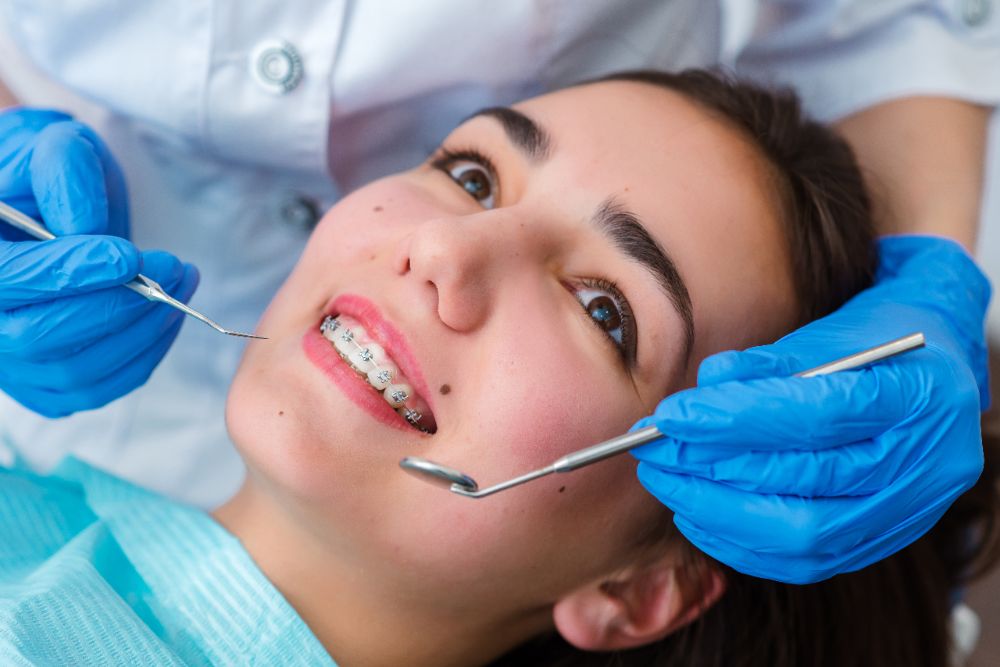Finding the Right Cumming Orthodontist for Your Braces and Aligners Requirements
Finding the Right Cumming Orthodontist for Your Braces and Aligners Requirements
Blog Article
Comprehensive Guide to Orthodontics Procedures for Remedying Dental Misalignments
Recognizing the complexities of each treatment, including their mechanisms, benefits, and possible disadvantages, is critical in making notified decisions concerning one's orthodontic therapy. As we navigate through the thorough guide to orthodontic procedures for dealing with dental misalignments, the elaborate details of each approach will certainly unravel, shedding light on the course toward a functional and harmonious oral positioning.
Orthodontic Procedures Introduction

Along with clear aligners and typical braces, orthodontists may also recommend other treatments like headwear, palatal expanders, or retainers to address details placement problems (cumming invisalign). These procedures are tailored to each patient's special demands and might include a combination of treatments to accomplish the preferred outcomes. Normal modifications and monitoring are vital components of orthodontic treatment to make certain progress gets on track and to make any type of necessary modifications along the way. By undergoing orthodontic treatments, individuals can not just accomplish a straighter grin yet additionally improve their overall oral health and function.
Typical Dental Braces: Just How They Work
When thinking about orthodontic treatments for oral imbalances, conventional dental braces attract attention as a tried and true method for dealing with teeth placing. Conventional dental braces include brackets, cables, and bands that collaborate to apply continual pressure on the teeth, slowly relocating them into the wanted positioning. The brackets are affixed to the teeth using an unique adhesive, and the wires are threaded via the brackets. By changing the stress of the cords, orthodontists can regulate the instructions and force put on each tooth, directing them into appropriate alignment gradually.
One key element of how traditional dental braces work is the process of bone improvement. As pressure is related to the teeth through the dental braces, the bone surrounding the teeth is reshaped to support the brand-new tooth placements. This makeover is important for the long-lasting security of the fixed alignment. People will certainly require routine adjustments at the orthodontist's office to make certain the dental braces remain to apply the proper stress for efficient teeth motion.
Undetectable Aligners: Cons and pros
These clear, customized trays are basically invisible when worn, making them an appealing alternative for people Click Here looking for a more visually pleasing orthodontic treatment. Individuals can remove the aligners before eating or brushing their teeth, reducing the threat of food getting stuck in the device and streamlining the cleaning procedure.

Surgical Orthodontic Options
Surgical treatments in orthodontics present feasible options for attending to complex oral imbalances that might not be efficiently dealt with through traditional orthodontic therapies. you can try this out While conventional braces and unnoticeable aligners can deal with several orthodontic problems, specific cases require surgical intervention to achieve optimum results. Surgical orthodontic options are commonly suggested for serious malocclusions, substantial jaw inconsistencies, and instances where the underlying bone structure needs modification to attain proper placement.
One common medical orthodontic treatment is orthognathic surgical procedure, which involves rearranging the jaws to remedy practical problems such as trouble chewing or talking. This surgery is often done in cooperation with an orthodontist who helps line up the teeth prior to and after the treatment. Surgical orthodontics may additionally involve procedures to expose affected teeth, eliminate excess gum tissue, or improve the jawbone to develop a more unified face account.
Before considering medical orthodontic options, patients go through an extensive analysis to determine the need and possible benefits of such treatments. cumming orthodontics. While surgical procedure might appear challenging, it can significantly boost both the function and visual appeals of the smile in situations where a knockout post conventional orthodontic treatments fail
Retainers and Post-Treatment Treatment

Failing to comply with post-treatment treatment directions can result in relapse, where the teeth progressively relocate back in the direction of their original placements. Constant retainer wear, great oral health, and regular oral exams are vital for maintaining the results achieved with orthodontic surgical procedure and making certain the long-lasting security of the corrected oral positioning.
Final Thought
In conclusion, orthodontic treatments use different choices for correcting oral imbalances. Surgical orthodontic options are offered for much more severe imbalances. Generally, orthodontic procedures can efficiently boost dental wellness and visual appearance.
As we navigate through the detailed guide to orthodontic procedures for remedying dental misalignments, the intricate information of each approach will certainly unfold, shedding light on the path towards a unified and practical dental positioning. - invisalign
One of the most common orthodontic treatments is the use of dental braces, which consist of metal brackets and wires that apply mild pressure to progressively shift teeth right into the wanted setting.When considering orthodontic treatments for oral imbalances, conventional braces stand out as a time-tested method for correcting teeth positioning. In addition, unnoticeable aligners might not be ideal for complex orthodontic problems that call for more considerable teeth motion, as they are commonly recommended for mild to modest situations. Retainers are tailor-made orthodontic gadgets developed to hold teeth in their fixed settings after the conclusion of orthodontic therapy.
Report this page